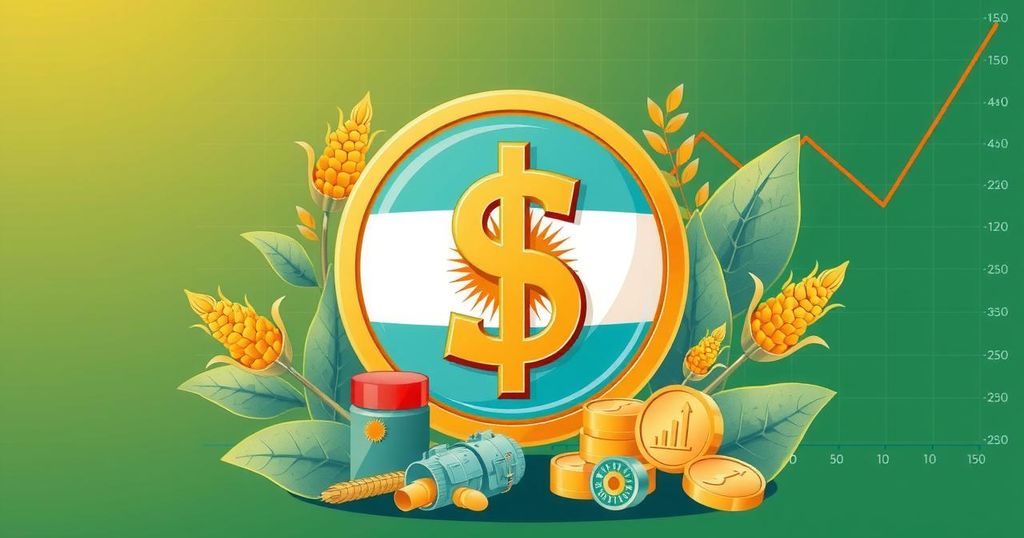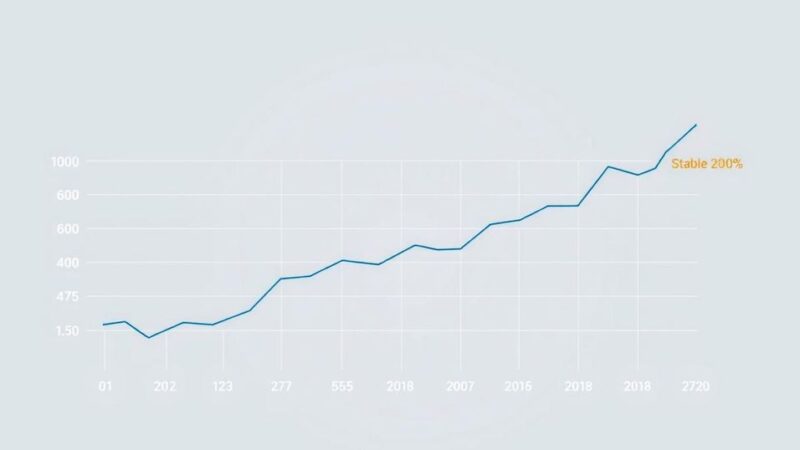Javier Milei’s strategy focuses on strengthening the peso ahead of Argentina’s midterm elections through measures like easing currency controls, promoting agricultural exports, and issuing peso bonds for dollars. While this may boost economic optimism, experts caution it could hinder competitiveness and fan devaluation fears.
Ahead of the critical midterm elections in October, Argentina’s currency, the peso, is central to President Javier Milei’s strategy. The libertarian leader sees the peso’s strength as vital for combating inflation and boosting his party’s electoral chances. His advisors have been tasked with implementing measures aimed at increasing the peso’s value. Recently, he introduced a trading band for the peso after easing some currency controls for individuals, with the currency currently trading under this band.
Since April 14, the peso has been trading below its defined range of one thousand to one thousand four hundred per US dollar. This approach was intended to limit depreciation and counter inflationary pressures that some analysts had projected would occur. “The model of a miserable Argentina, given away in dollars, is over,” said Economy Minister Luis Caputo during a meet-up with business leaders last week.
A stronger peso may raise hopes for economic recovery among the populace, but it could also pose risks to businesses. Alejandro Cuadrado, with BBVA, warned that “the peso had already appreciated in real terms, so strengthening it would deepen that trend.” With that in mind, here’s a look at the proposed methods for bolstering the peso further.
First, the seasonal boost from soybean exports is significant. The second quarter typically floods the market with dollars due to agricultural harvests, and with the end of a tax exemption on these exports by June 30, more producers may be induced to trade their dollars, aligning with Milei’s objectives.
Next up is a plan by Argentina’s Central Bank to issue peso-denominated bonds that can be bought with dollars. Federico Furiase, a bank director, indicated this move is aimed at boosting foreign reserves, which is crucial for the economy.
There’s also a new regulatory update, inviting foreign investors into the official exchange market for a minimum of six months. This change is attracting interest in the carry trade, where investors seek to benefit from high returns in pesos—assuming a stable or appreciating peso.
A measure known as the amnesty for savers aims to bring approximately $200 billion currently sitting outside the banking system back into mainstream use. Caputo’s strategy is to funnel these savings into daily transactions and limit the surplus of pesos currently in circulation, promoting dollar transactions instead.
Moreover, energy exports are increasing and are projected to be the second-largest source of foreign cash flow for the country, following agriculture. Central to this is the Vaca Muerta oil field, which is key to this strategy.
Foreign direct investment is another target area. Following the relaxation of exchange controls, the government expects an uptick in dollar supply, tempting companies to bring foreign cash into the economy if they can freely sell on the forex market. The RIGI program is also in place to incentivize large investments, though foreign investor enthusiasm has been muted during Milei’s presidency.
Meanwhile, Argentina’s Treasury is maintaining a fiscal surplus in an effort to restrict peso circulation and alleviate pressure on the dollar’s demand. This plan was outlined by Furiase last week, emphasizing how fewer pesos in circulation could stabilize the exchange rate.
The Central Bank’s strategy of holding back on dollar purchases until the peso can gain strength is also noteworthy. They’ve indicated new dollar-denominated bonds available in pesos for companies needing to transfer dividends abroad, marking a shift in policy.
With these measures, the government seems committed to maintaining the peso’s strength. Remarkably, it has become one of the world’s top-performing currencies in 2024 when inflation is factored in, now at its highest value in a decade, according to official stats.
Yet, a strengthening currency isn’t without its complications. Economic experts caution against pushing for the lower limits of the trading band, considering ongoing requirements from an International Monetary Fund deal. As Cuadrado suggested, it’s crucial not to risk a less favorable economic climate later in the year.
Milei’s administration aims to create leeway for purchasing power boosts in light of wages. However, some analysts worry about the impacts on various sectors, as a booming currency could lead to reduced activity or raise expectations of devaluation.
Federico Filippini, chief economist at Adcap, noted that this period may create favorable conditions for dollar buying, but as long as inflation remains in check under government focus, such growth will be sustainable. On another front, business leaders are pressing for tax cuts, voicing concerns about an economically straining environment. Manuel Santos Uribelarrea, CEO of MSU, expressed that the overlapping challenges of withheld taxes and a strong exchange rate are causing troubles for many sectors.
In summary, President Javier Milei’s strategy to strengthen the Argentine peso ahead of the crucial midterm elections involves a variety of tactics including seasonal agricultural exports, policy shifts for foreign investment, and measures to encourage domestic savings. While a stronger currency offers potential benefits like increased purchasing power and optimism about the economy, it also poses risks to business competitiveness as well as devaluation fears. The success of these measures remains to be seen as Milei navigates the complex economic landscape leading into October.
Original Source: www.batimes.com.ar






